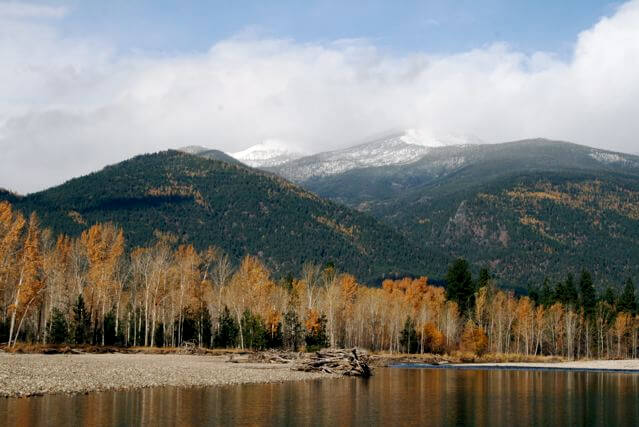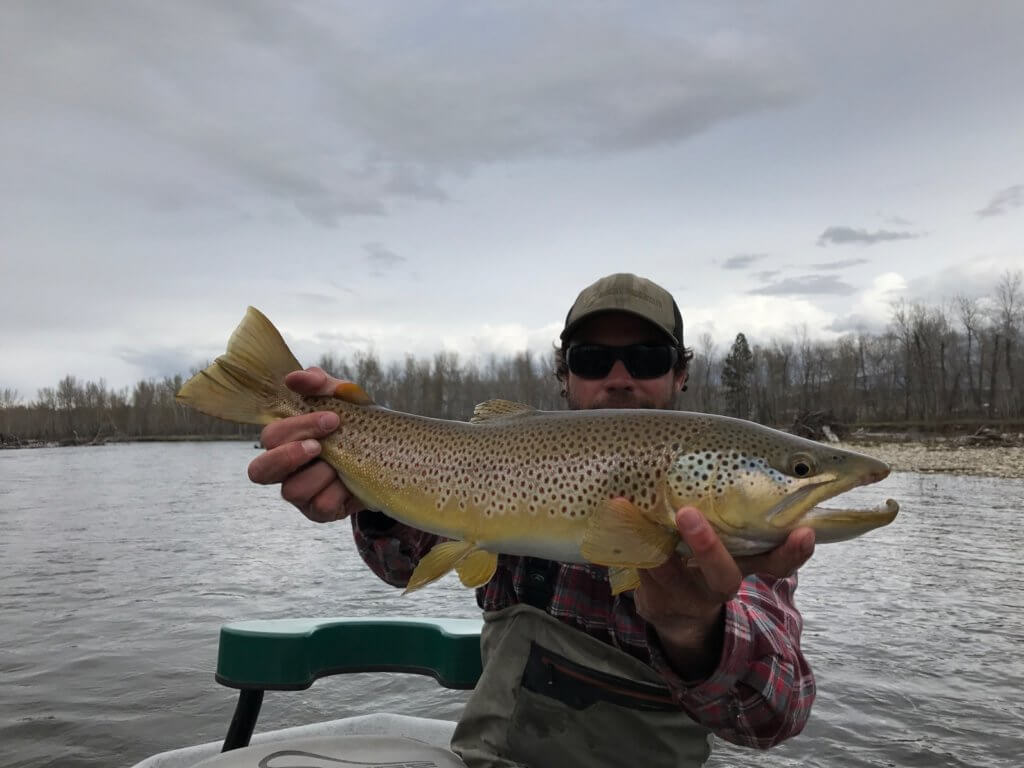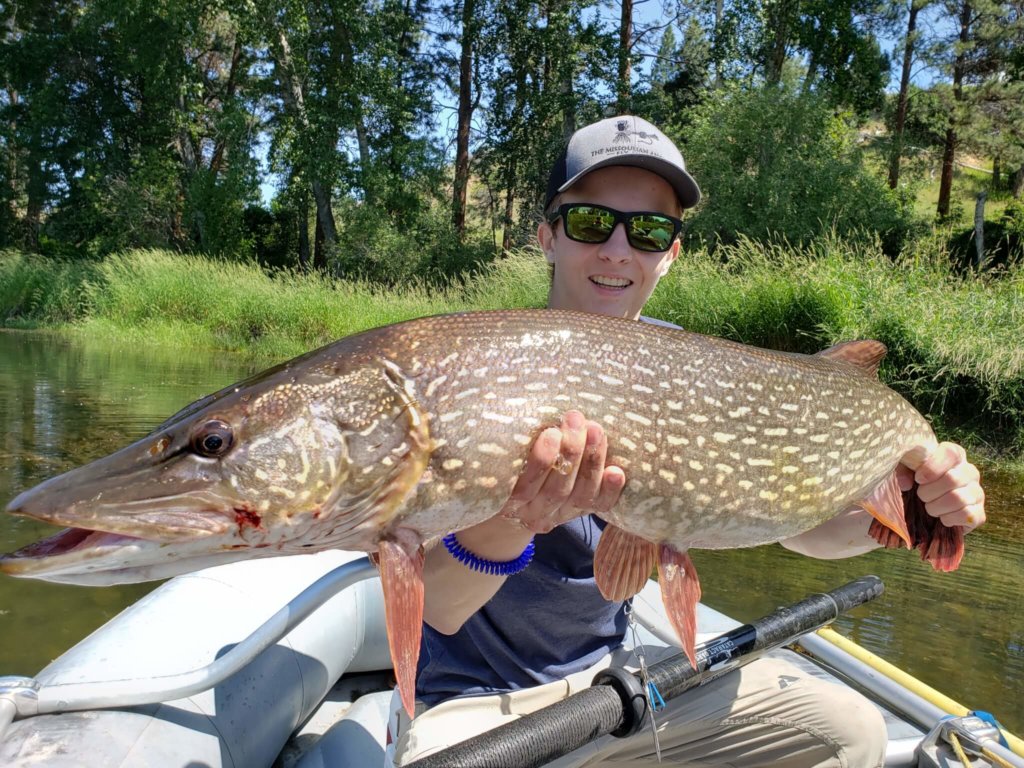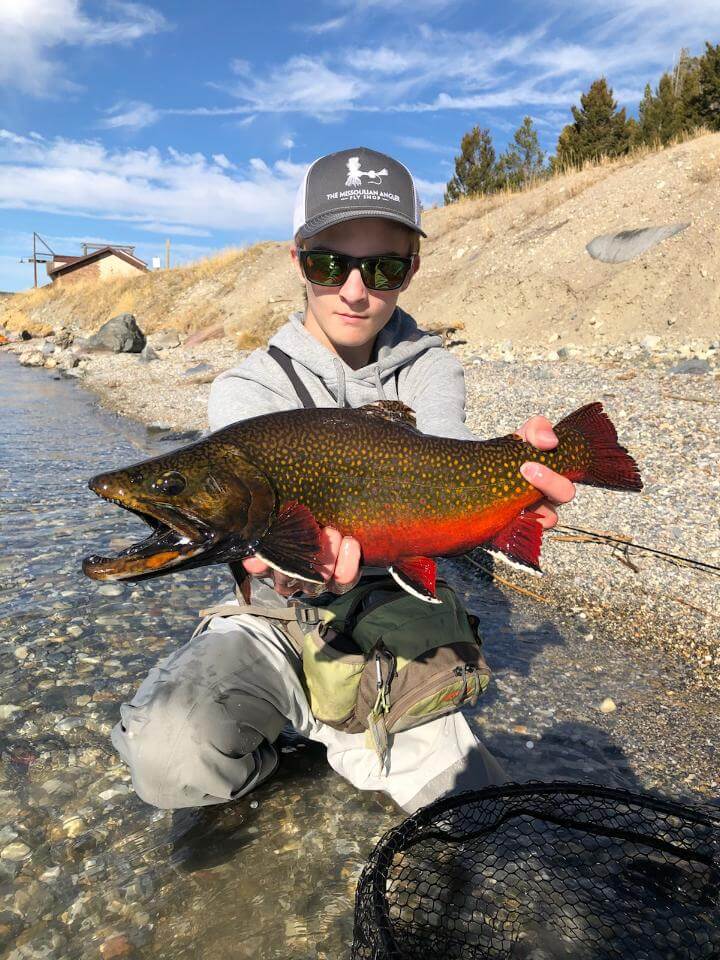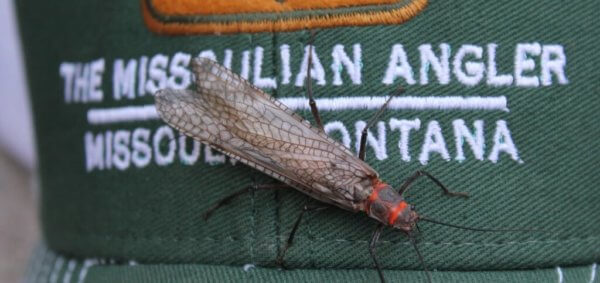Fly Fishing the Bitterroot River, MT

Meandering – Gravel Bars – Islands
First Impressions
Everything you’ve ever wanted to know about fly fishing the Bitterroot River in Montana can be found right here.
The Bitterroot River is one of the most interesting fly fishing destination in Montana. To start, it flows south to north. It’s always fun to say you’re not going “down” the Bitterroot as you go south, you’re going “up’! As you head south, upriver, you’re flanked by the Sapphire Mountains, one of the most beautiful ranges in Montana. The Bitterroot River is a freestone river, deriving most of its streamflow from snowmelt, and averages about 700 trout per mile along its length, with trout over 23 inches being caught yearly. Great fly fishing and great scenery is the Bitterroot’s calling card.
Sections Defined
The main stem of the Bitterroot River begins in Conner, MT, where the East Fork and West Fork of the Bitterroot come together. The river flows north for 84 miles, joining the Clark Fork River just below Missoula. The Bitterroot River varies in temperament along its length, with the upper stretch having a higher gradient than the lower section. For our purposes, we consider Bell Crossing to be sort of the dividing line between the upper and lower Bitterroot River. The higher gradient sections have more riffles and pools, more like a classic Montana fly fishing adventure, while the lower section can be long, flat glides with sizeable riffles separating them, providing a completely different Bitterroot River fly fishing experience.
Characteristics
An amazing characteristic of the Bitterroot River is average depth for size of the river. Once you’ve gone south to Florence Bridge and above, the average depth of the Bitterroot is about three feet. This is on a western Montana trout river that can be over 125 feet wide in places. The upshot of all this is you have a river that wades much like a small stream, with all the characteristics of a big river.
It’s a given that larger rivers hold bigger fish. The lower Clark Fork holds the largest Brown Trout in Missoula, Montana. Rock Creek has the most trout per mile for any river in our area, but as the smallest watershed the average size fish is lesser. The Bitterroot River fly fishing has the best of both worlds. With its average depth, there’s often an easy way to range both sides of the river while wading. Wherever you are on the Bitterroot, unlike the Blackfoot River or Clark Fork River, within a quarter mile up or downstream, you can usually find a place to cross. It gives the wading fly fisherman an opportunity to cast for truly large Montana trout in a comfortable wading environment.
If you’re bringing a boat to fly fish Montana, that average depth should be something to be aware of. All those easy places to cross while wading, those 6” deep riffles, can play merry hell with Montana float trips. Many of the best guides in Missoula prefer a raft. Not for comfort, but for ease of dragging, and resistance to rocks and other river impediments. A raft, especially with an inflatable floor, will slide over shallows more easily than a drift boat. Depending on the season and water flows, a drift boat can be a very interesting proposition above Stevensville. You can always check with us about local river flows, obstacles and other floating information by calling our Missoula fly shop at 406-728-7766.
Spring
As Missoula’s southern-most river, the Bitterroot wakes up first after winter. Depending on the spring, Bitterroot river fly fishing can be extremely good by February 25, and fish well through run-off, which typically starts by late April. The early season fly fishing hatches consist of an epic Skwala stonefly hatch, along with Nemouras, Blue Winged Olives and Western March Browns. The Skwala hatch is known as some of the best dry fly fishing of the year, and you’ll find Montana Fly fishing enthusiasts across the state coming to experience this amazing hatch.
During run-off, another feature of the Bitterroot River become very apparent. As high water wanes, the side sloughs of the Bitterroot come alive. Many sloughs are spring fed, clearing much earlier than the main stem. Because they’re clear, many fish move into these sloughs and feed voraciously. If you’re good on the oars and can handle some faster water, you’ll love the Bitterroot River fishing experience. While you’re moving from slough to slough, others will just be sitting at home—or, even worse—golfing!
As an aside about floating the Bitterroot River- by statistic, it’s one of the most dangerous rivers in Montana. We surmise this stems from the Bitterroot’s benign look in the lower sections. When you float the Blackfoot River or Rock Creek, it’s fast, roily and a little intimidating. You don’t dare take your eyes off the water or hands off the oars for a second! But the Bitterroot River floating can lull you into a false sense of security. It looks slow and flat, so you decide to light your cigar or crack a beer, and next thing you know there’s a sweeper and you’ve got trouble. All Montana float trips have inherent risks, don’t get lackadaisical on the ‘Root because it looks easy. Many anglers book local guides on this river for that reason.
Summer
As run-off ends, fly fishing the Salmon Fly hatch and Golden Stone hatch revs up, along with the PMD’s, PED’s and Tan Caddis. The river can be a Montana dry fly fisherman’s paradise at this point, as other Missoula and Montana rivers are getting a lot more pressure. The Salmon Flies are better the further south you go, with the West Fork having a stupendous hatch. The golden stoneflies are found along the length of the river, as are the mayflies and caddis. As with all rivers in Missoula, and across Montana, fly fishing the end of run-off is prime time.
As the water levels drop into August, the river can get very low, and the fish very snotty! Those long, flat glides in the lower section boast a great trico hatch, but bring your A-Game, because it can be tricky. The upper river will offer a bit easier fishing, as the higher gradient and faster water gives the fish less time to examine your fly! Hoppers and other terrestrials on the Bitterroot River can be some of the best fly fishing in Montana during high summer. This is the time of year to fish the edges of the day on the Bitterroot- early mornings and near dark. The heat will drive the fish to ground during the heat of the day.
Missoula Montana Guided Fly Fishing Trip
Come enjoy a day on the river with Missoula’s best fly fishing guides. We float the Bitterroot River, Blackfoot River and the Clark Fork River. All gear, lunch and transportation provided.

Fall
Once the first real September rains arrive, the Bitterroot River comes alive. Blue Winged Olives, October Caddis and Mahoganies start to appear. The streamer fishing before the hatches start can be lights out. The weather cools down, the nights get a little longer, and Gentleman’s Fishing begins. What a perfect way to fly fish the Bitterroot River! Arrive at the water about 9:00 am, off the water by about 5:00! The perfect time and a perfect Montana river for those who might want breakfast, or a cocktail after a day on the water. As fall turns into winter, the hatches wane and the nymph fishing really comes to the fore.
Final Thoughts
The Bitterroot River offers a unique Montana fly fishing experience. Big enough to easily float, the wading is superb, with fish that attain real size. While it can be as easy a river to fly fish in Montana, some of the guides call it the “Betternot” because when the Bitterroot trout close their mouths, they stay closed! It can be the most challenging river in the area, and some days a couple of fish are a real accomplishment. But in that lays its charm. The Bitterroot River isn’t a guarantee- there are days you’re going to work for every bump. But that just adds to the special feeling you get when you’re there at the right time, in the right place. The Bitterroot River is a special place, with so much to recommend it. Scenery, fly fishing and the chance for an epic day with an epic hatch. That’s the Bitterroot!
To learn more about fly fishing the Bitterroot River in Montana, contact our team today.
Bitterroot River Fish Species
Bitterroot River Hatches


